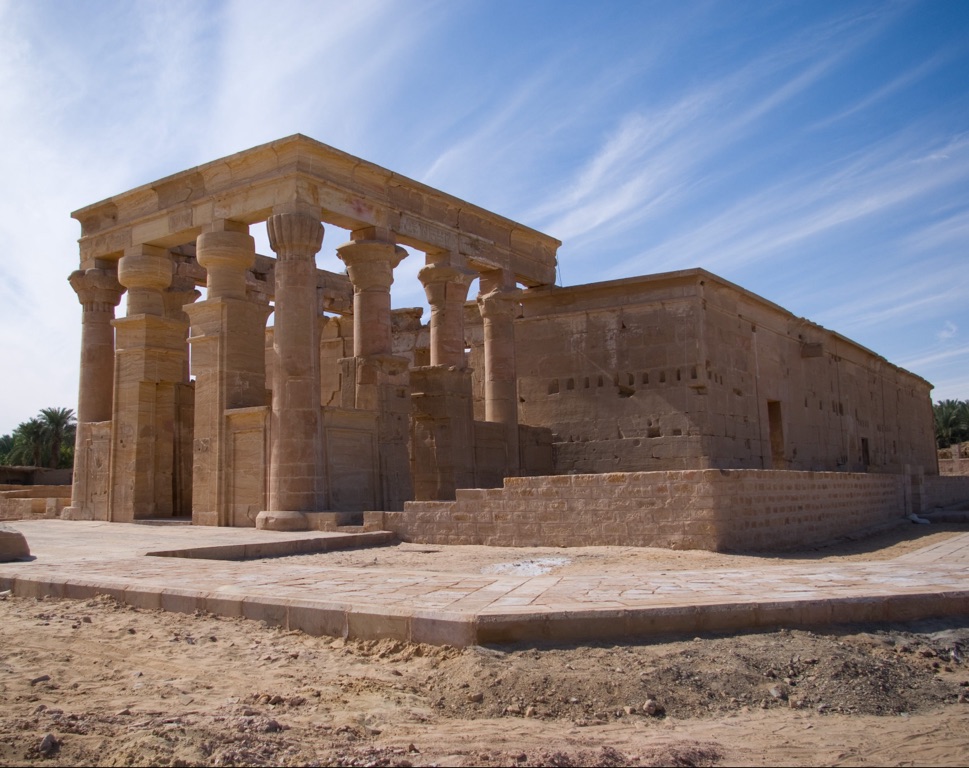The Temple of Hibis stands as a remarkable testament to ancient Egyptian civilization, nestled in the Kharga Oasis. It is the largest and most well-preserved temple in the oasis, dedicated to the Theban triad of Amun, Mut, and Khonsu. The temple showcases a blend of Egyptian architectural styles, with influences from the Persian period. Its walls are adorned with intricate inscriptions and vibrant paintings that have withstood the test of time, offering a glimpse into the religious practices and artistic achievements of the era.
Get your dose of History via Email
Historical Background of Temple of Hibis, Kharga Oasis
The Temple of Hibis, a jewel in Egypt’s Western Desert, dates back to the 26th Dynasty. It was built by the pharaoh Apries, with contributions from later Persian rulers. The temple’s strategic location in the Kharga Oasis made it a vital religious center. It was rediscovered in the early 20th century by Ahmed Kamal, Egypt’s first native Egyptologist. Over time, the temple has seen various modifications, reflecting the changing dynasties that ruled over Egypt.
Constructed as a dedication to Amun, the temple later incorporated other deities into its pantheon. The Persian influence is evident in the temple’s architecture and inscriptions. Despite the harsh desert environment, the temple has remained remarkably well-preserved. It has not only served as a place of worship but also as a fortress during turbulent times, indicating its importance in both religious and military history.
Throughout its history, the Temple of Hibis has witnessed various phases of occupation and abandonment. During the Christian era, it was repurposed as a church, which is a testament to its enduring significance. The temple’s walls bear witness to historical events, with inscriptions from different periods providing valuable insights into the religious and political landscape of ancient Egypt.
The temple’s significance extends beyond its religious function; it played a role in the famous Persian Wars. The presence of Persian rulers’ cartouches suggests their influence and control over the oasis. The Temple of Hibis thus stands as a silent observer to the ebb and flow of empires and civilizations that have passed through the Kharga Oasis.
Excavations and restorations have been ongoing at the Temple of Hibis, revealing more about its complex history. These efforts have uncovered additional structures and artifacts, shedding light on the temple’s role in the broader context of ancient Egyptian society. The temple’s preservation allows historians and archaeologists to piece together the puzzle of Egypt’s multifaceted past.
About Temple of Hibis, Kharga Oasis
The Temple of Hibis is a masterpiece of ancient Egyptian architecture, showcasing a blend of traditional Egyptian and Persian styles. It is constructed primarily of mudbrick and limestone, materials readily available in the region. The temple complex includes a sanctuary, hypostyle hall, and various chambers adorned with religious iconography.
Architectural highlights of the temple include the entrance gate, which is flanked by colossal winged figures. The hypostyle hall, with its towering columns, leads to the inner sanctuary where the gods were worshipped. The walls and ceilings are covered with intricate bas-reliefs and frescoes depicting various deities and religious rituals, providing a colorful canvas of ancient Egyptian mythology.
The construction methods of the Temple of Hibis reflect the ingenuity of ancient builders. They utilized a combination of cut stone for the temple’s foundation and decorative elements, while mudbrick was used for the main structure. This combination allowed for a durable construction that could withstand the harsh desert climate.
One of the most striking features of the Temple of Hibis is its well-preserved state, particularly the vibrant colors of the wall paintings. These paintings use a range of mineral-based pigments, which have retained their brilliance over millennia. The preservation of these colors offers a rare opportunity to see ancient Egyptian art as it would have originally appeared.
The temple’s layout follows a traditional Egyptian design, with a clear axis leading from the entrance to the sanctuary. This design not only served a religious purpose but also demonstrated the power and authority of the pharaohs and their divine connection. The Temple of Hibis thus stands as a testament to the architectural and artistic prowess of ancient Egypt.
Theories and Interpretations
The Temple of Hibis has been the subject of various theories and interpretations over the years. Scholars have debated its precise religious significance, given the amalgamation of deities worshipped within its walls. The presence of Persian elements has led some to suggest that the temple was a symbol of Persian authority over Egypt during their occupation.
Another theory posits that the temple served as an astronomical observatory, as certain inscriptions and alignments within the temple appear to correlate with celestial events. This theory is supported by the ancient Egyptians’ known interest in astronomy and its role in their religious practices.
The mysteries of the Temple of Hibis also extend to the interpretation of its artwork. Some frescoes and inscriptions have been difficult to decipher, leading to various hypotheses about their meaning. These interpretations often rely on cross-referencing historical records and religious texts to provide context for the imagery.
Dating the temple has been a complex task, with different parts of the structure attributed to various periods. Radiocarbon dating and analysis of the inscriptions have provided a timeline for the temple’s construction and modifications. These methods have helped to clarify the sequence of rulers who contributed to the temple’s development.
The Temple of Hibis continues to be a focal point for research and exploration. As new technologies emerge, archaeologists and historians are able to delve deeper into the temple’s secrets. Each discovery adds a piece to the puzzle, enriching our understanding of this ancient wonder.
At a glance
- Country: Egypt
- Civilization: Ancient Egyptian, with Persian influences
- Age: Approximately 2,500 years old (6th century BC)

